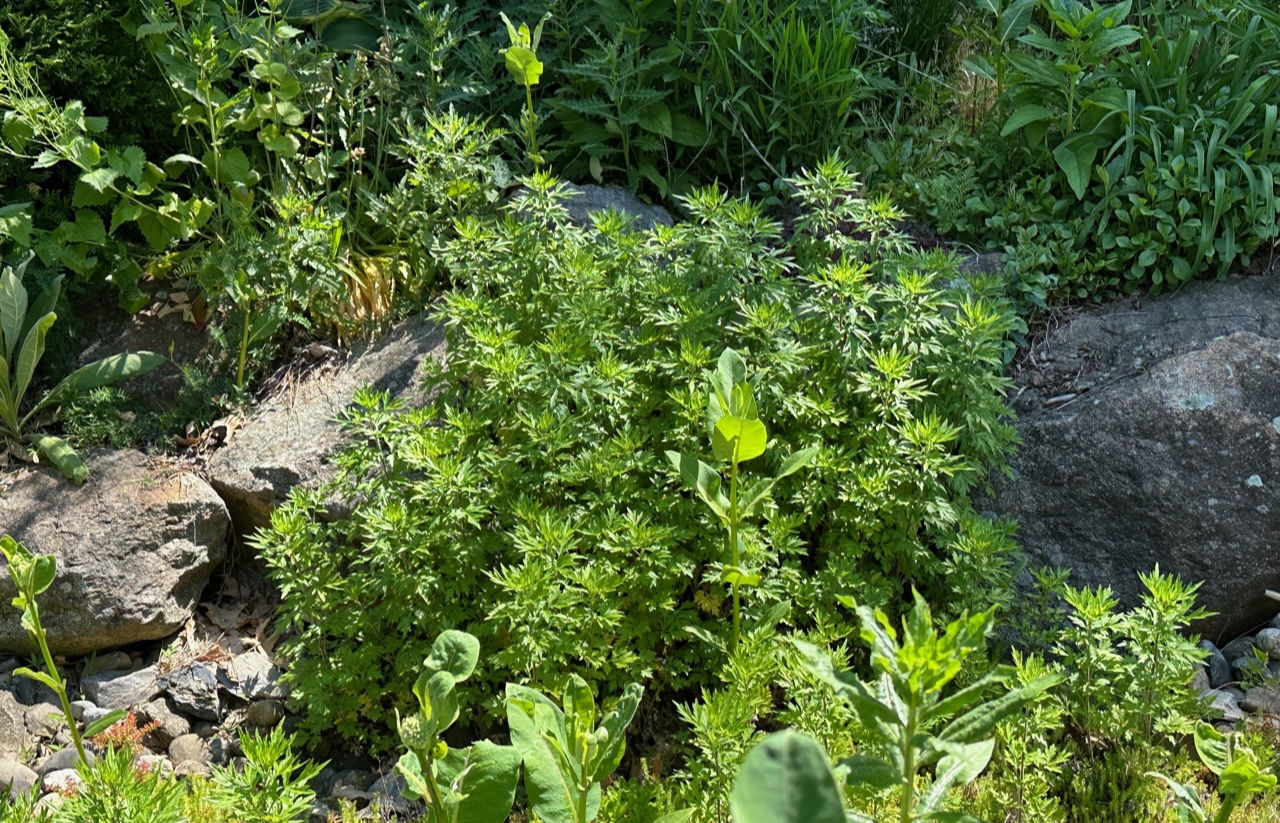
Mugwort
Plants rule the world.
Journey: April 8, 2021
By Maria Rodale
Sign up for our monthly newsletter!
It all started with mugwort.
Its pungent leaves look like chrysanthemums, sage green with jagged edges. If it is allowed to grow to its full height of about three feet, it produces tiny nondescript flowers.
“What is this?” I asked the fancy landscaper who was visiting my garden.
“Ugh, that’s mugwort. It’s almost impossible to get rid of without Roundup.”
Damn. I am definitely not a Roundup user. But that summer I considered it. Which for me was sacrilegious! After all, I belong to the family that started the modern organic movement in America, and I’ve written a book called Organic Manifesto. I searched for other options and discovered that, yes, mugwort is almost impossible to eradicate. I imagined how easy it would be to just spray it away. Sigh.
Nope. No Roundup for me. I would do it the hard way.
In pursuit of mugwort eradication, I dug down deep into the soil, pulling up roots that ran like frustratingly tangled computer cords from one plant to another, diving under big rocks and out the other side. I collected piles and piles of mugwort. I occasionally found what seemed to be a mother root that connected all the other roots, and with deep, dark satisfaction I pulled out these giant spider legs of the dread pirate mugwort.
As a lifelong passionate gardener and landscaper, I had been seduced and inspired by gorgeous photos in gardening magazines, scenes where the wildness had been meticulously manicured and cultivated. The only weed was the occasional mullein, looking fabulous in bloom, like a statuesque movie star in a bright yellow dress, standing out from the crowd. I was charmed by those country retreats of the European landed gentry even though I knew from experience that such photographs were taken only after an army of gardeners and stylists had swarmed in and worked for hours to create that effortlessly fabulous look of subtle luxury. In those photos, a perfectly laid table of food fresh from the garden gleamed in the golden light of sunset, sparkling like a bubbly glass of rosé wine, seducing the viewer into an ideal of relaxed sophistication. Every linen perfectly ironed. Every basket handmade. Everything under control and pleasing to the eye. These gardens weren’t just beautiful fantasies—they represented a longing to fit in to a social stratum I knew I would never belong to. For decades I was determined to strive for this ideal: a garden without mugwort and other nasty weeds.
Perhaps my wish to be part of the high society of gardening harkened back to my own grandparents’ desires to fit in. My father’s father, J. I. Rodale, was born and raised in the Jewish tenement buildings of the Lower East Side of Manhattan. My father’s mother, Anna, was a coal miner’s daughter from the dismal mining town of Tamaqua, Pennsylvania. She moved to New York City when she was orphaned at the age of fourteen, and that’s where my grandparents met (at a dime-a-dance hall). When J. I. and Anna bought a farm in Allentown, Pennsylvania, a few years after they married, they were eager to try out all the ideas they had learned about gardening without chemicals from the British aristocracy. They read about composting in Sir Albert Howard’s famous book, An Agricultural Testament. And they read about the importance of healthy soil in Lady Eve Balfour’s The Living Soil. In the 1940s and ’50s, my grandparents created a formal and functional organic farm that looked more European than American. They had created their own vision of the American Dream. This magical farm was where my family lived and where I grew up, free to roam my whole childhood.
With that as my family legacy, my garden had to live up to high expectations—both my own and what I believed others expected. And that’s how I found myself determined to eradicate the mugwort. It was the first summer of the Covid pandemic, and I made the “perfect garden” campaign my primary focus. During that enforced time at home I dug so hard and so long that for one week I felt like I had won. But it was only early summer. I should have known how the story would go. After all, I’d been weeding for my entire life of fifty-nine years (if I count my early mud-pie-making days). By fall I gave up. A brief bout of Lyme disease in September led me to take the kind of antibiotics that cause sun sensitivity, and I stayed inside. Winter came. It snowed in feet, not inches, in December, January, and February.
In April I went out to my garden and there was the mugwort . . . bigger and better than ever, rising like Jesus from the dead. It was like I hadn’t even tried to get rid of it the year before. I started to stab the cold earth with my Japanese weeding knife, still determined to eradicate it.
After a few minutes in stern attack mode, I stood up, took a breath, and thought for a moment. When I was a CEO and staff members complained to me about the same thing over and over again, I would say to them, “If you feel like you are banging your head against a brick wall, maybe it’s time to try something different.” I looked down at the single mugwort plant I had been about to murder. Maybe it was time for me to take my own management advice. The leaves were kind of pretty. I suddenly sensed the plant trying to get my attention, and I felt something shift in me—as if a different lens was placed over my eyes, with a direct line to my soul. For a brief second, I felt the aliveness—the consciousness—of everything. Especially that little sprout of mugwort. What was I doing? I was expending all this energy and fury, and it was just a plant. Who said it was bad? Was this how I wanted to spend my life? Was this the hill I wanted to die on? Why was I making mugwort my garden nemesis?
I consider myself a nature lover, and yet that summer, when it came to my garden, I was acting like a fascist dictator. Not only was it not a good look, but it wasn’t bringing me any joy or satisfaction. Something wasn’t right. What wasn’t I seeing that I needed to see?
There are times when you know in your brain what’s right or smart, but your lifetime conditioning and habits override your good sense, and you keep on doing something that’s stupid and doesn’t work. Memories rose up of my mother kneeling in her flower garden angrily pulling the weeds. I remembered her marching around our farm and complaining that the gardens weren’t weed-free enough. She was Pennsylvania Dutch, and I later attributed her abhorrence for weeds to her German sense of obsessive tidiness. Even though she was long dead, I still often heard her voice of judgment in my head, saying: “Clean up this mess!”
Another voice joined in: “Make sure you pull the weed out by the roots.” It was my first farm boss, sternly giving me instructions for my summer job on the farm. He was also Pennsylvania Dutch, and he pronounced roots more like “ruts.” That phrase had been echoing in my mind for forty-five years.
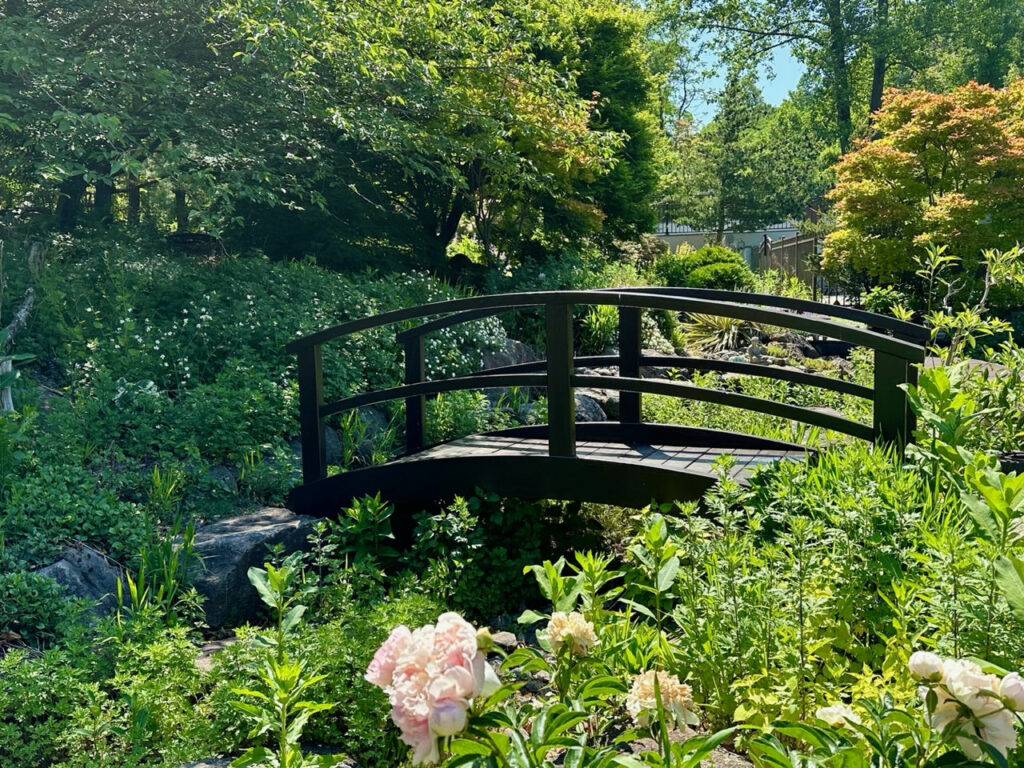
That moment in my garden with mugwort triggered a major awakening in me. I saw how my convoluted history with gardens and my family and the Rodale publishing company was like the tangled mugwort roots. But I was finally free from the burden of the family business, having sold it two years before, and I suddenly felt able to look at everything with a new perspective—not the one I had been born with and trained for in my whole life so far, but with a new openness. Beginner’s mind, as it is sometimes called. An idea began to take shape. I had been journeying for years—usually to try and solve relationship or business problems—but now it occurred to me that perhaps during a journey I could try to speak directly with a plant or animal.
Coincidentally (or magically), that very night I planned to attend a group journeying session. Lisa had started weekly sessions to provide people with a sense of community during the pandemic. She
calls the practice of people gathering to journey on a regular basis a “shamanic caravan,” with each of the individuals journeying in their own “wagon.” Kind of like a tribe of travelers traversing a new and challenging landscape together. We were a small group, usually two to six people, who showed up to journey over Zoom with the goal of harnessing the power of group energy and intention while encouraging each person to tap into their own guidance. Lisa would open sacred space and rattle while we journeyed. And then we would share our journeys with each other.
Experienced journeyers recommend that you always set an intention before you journey. Ask a question, perhaps. Or decide in advance where you might want to go or who you want to speak with. Otherwise you might get lost or meet up with some bad influences. For many years I didn’t know that. Now I do.
That night at the group journeying session, I set the intention of trying to understand mugwort and see if it had anything to tell me. The sky was still light, but I knew it would turn to dark blue by the time the journey was done. I lay down on the blanket I use for journeying—I call it my magic blanket just for fun. (It’s a rainbow-colored Beaver State Pendleton blanket I bought in Santa Fe on my twenty-first birthday.) I like to lie down fairly flat when I journey. I’ve heard the process described as creating a “hollow reed”—an empty conduit for the energy of the journey to travel through unimpeded. I make sure my hair is loose and my shoes are off and I get comfortable.
Lisa opened sacred space. Then the rattling started.

Every journey starts with entering an imaginary portal: a hole in a tree, a cave, a body of water, or some natural crack in the earth. For this journey, I attempted to begin by entering into mugwort. It wouldn’t let me in. Hmmm. I had never experienced this problem before. (During the discussion afterward, Lisa explained that living things aren’t portals for journeying. She wasn’t surprised that I couldn’t get in through the actual plant. I had experienced a core shamanic truth before I had learned that there was such a truth.)
I changed my approach and entered my usual hole in a tree. It was dark, and it stayed dark. I felt like I was underground. I waited. When I’m on a journey and nothing is happening, I usually start to question my sanity. I started questioning it now. I waited some more. Suddenly she started talking softly to me.
“You are always trying to kill me. Have you ever thought about asking me nicely?”
No, I hadn’t.
“You know you are never going to get rid of us. Plants rule the world.”
That’s true, I thought. Why hadn’t I seen that before?
“Mugwort is good for the heart, you know. Do your research. Whenever a plant shows up as a pest, study it. We are just trying to communicate with you.”
OK, OK, I got it. I had been worried about my heart because there is a history of heart attacks in my family. Also, recently I had been yawning a lot and not able to stop, which I worried was a yet undiscovered risk factor for heart-related issues.
At that moment, my faithful spirit animal showed up and said, “Let’s go for a walk.” We started walking in my garden, among the mugwort. “You know, all your anger at weeds is not good for your heart. Stop worrying so much about them.”
The rattle sped up faster, calling me back.

Was it really that simple? Just stop worrying? Easier said than done, right?
It’s easy to think we are rational beings. That what we have been taught is always true and facts are facts. But through journeying I suddenly understand with my whole heart and soul. Mugwort is not my enemy, she is my ally. My teacher. And the more I try to kill her, the more I am eradicating any opportunity for me to learn and grow. And by the way, I can’t destroy her because plants rule the world.
Once I started paying attention in a new way, mugwort showed up everywhere.
The very next night Lucia asked me to watch Spirited Away, a classic Japanese animated movie, with her. Halfway through the film, the bath master gives someone a ticket for a mugwort bath. I sit up. Huh?!
Clearly, I needed to learn more about mugwort. I had looked it up in some herb books, and I knew that mugwort is considered a healing plant. It’s recommended to enhance dreaming and deep sleep, but I’m a good sleeper. I didn’t need help with that. There had to be something more . . . I sensed a mystery that needed solving.
I am not a systematic or scientific researcher, but I am a voracious reader. I love to learn. I think I actually “suffer” from epistemophilia, which is the sometimes excessive love of and thirst for knowledge. I devour all sorts of content. For me, the miracle of modern technology is the wealth of information to be found at my fingertips online. The joy that comes from connecting the dots between history, science, nature, and the humanities is one of my greatest life pleasures.
I discovered a world of mugwort lore, products, and treatments. There is mugwort for sale online. Wait a minute . . . People buy mugwort? Apparently in Asia mugwort is a considered a very healing plant. It’s often used to reduce skin redness. I often have skin redness. It’s also used in acupuncture in a weird burning technique called moxibustion. Tiny piles of dried mugwort are placed on the skin at key meridian points (Chinese medicine energetic spots) and then burned. It doesn’t hurt. That triggers a memory of a treatment I once had at a spa in Texas. (I’ll try almost anything once.)
Mugwort is considered a key part of the Korean creation myth. The story goes that a tiger and a bear named Ungnyeo lived together in a cave and prayed to their divine king to be made into humans. The
king gave them twenty cloves of garlic and a bundle of mugwort and ordered them to stay in the cave for one hundred days, eating only the garlic and mugwort. The tiger left after twenty days, but the bear remained. And on the twenty-first day the divine king turned her into a woman. Ungnyeo prayed to a sacred birch tree for a child, and the king took mercy on her and gave her a son, who became the founder of the Korean nation. Clearly, mugwort has some royal roots.
Mugwort’s Latin name is Artemisia vulgaris. It’s considered a plant of protection—even protection from insects and evil spirits. In many European pagan traditions, mugwort is used for smudging, similar to the way Indigenous Americans use sage or cedar. (Actually, some Indigenous Americans use mugwort too.)
Smudging is a way of cleansing the energy around a person or a thing, and like shamanism, smudging rituals are found all over the world. It is believed that the smoke gets rid of negative energy—but also that smoke can send messages to the ancestors or spirits. It’s why burning incense is a traditional practice in many Asian cultures. Smudging usually involves burning a bundle of dried herbs and letting the smoke surround a person, a room, or a place that is in need of protecting, cleansing, healing, blessing, or connecting to the spirit world. Australian Aboriginal people do it. Scottish people burn juniper in a tradition called saining. Catholic priests do it when they burn incense in a thurible as they begin a mass. And believe it or not, the Pennsylvania Dutch do it too . . . with mugwort!
Now I realize that Mugwort might have been asking me: “Don’t you know who I am??” Uhh, no. Apparently I didn’t.
Here I had a sacred, powerful medicine plant in my own garden, and I had been trying to destroy it. Stupid me.
The next day I picked a bunch of mugwort, steeped it in hot water, strained it, and added the tea to my hot bathwater. That night I did have intense dreams.
I started asking my friends who are interested in the healing qualities of plants about mugwort and if and how they use it. Some people make smudge sticks from it. Others eat it. A long-buried memory surfaced of eating mugwort rice balls at Miya’s Sushi (Chef Bun Lai’s former restaurant in New Haven, Connecticut, that celebrated eating invasive species). They were yummy. Mugwort has a distinct and strong herby flavor that is hard to forget. I began to feel intense gratitude for this pervasive and magical plant.
I had embarked on a journey to talk with Mugwort because I wanted to understand plants and nature in a new way. To listen rather than destroy. To ask rather than demand. To learn to respect rather than disregard. And also, to find out why it annoyed me so much. But what I found was much more than some interesting information about a seemingly problematic plant. Mugwort had a message for me about a different species altogether: Homo sapiens. We humans are never going to get rid of our “enemies”—whatever group of humans or pests that annoy us or we don’t like. All the genocides, all the wars, all the revolutions, and all the terrorist attacks throughout history have not eradicated whatever we fear is the enemy. Killing one dictator does not eradicate dictators. Trying to exterminate or “cleanse” an ethnic or religious group is not only abhorrent but doesn’t work and never will. The root systems of our species and all our ethnicities are deep and strong. Trying to eliminate a group, just like trying to eliminate a plant, is a futile endeavor. Sure, lots of things have gone extinct over the eons for many different reasons. But by intentionally trying to make something else extinct, we are probably most likely to extinct ourselves.
There is a phenomenon known to farmers who plant genetically modified crops (GMOs, or bioengineered plants) that can withstand exposure to the herbicide Roundup wherein the more Roundup they apply, the larger and more resilient the weeds eventually become. The weeds know how to evolve to withstand the herbicide. They are called “superweeds.” Farmers have to use even more toxic herbicides to kill those superweeds. But in the process, these farmers are harming the soil, the water, and the health of all species on Earth even more than before.
This doesn’t mean farmers (or homeowners, for that matter) who use Roundup are bad people. It just means they’ve fallen for a false story. The latest superweed for farmers is a plant called Palmer amaranth. It grows eight feet tall, with stalks two to three inches thick. Each seed head produces up to 500,000 seeds. Because competition from Palmer amaranth can reduce crop yields by up to 90 percent, conventional farmers are having to abandon fields populated by Palmer amaranth, since there are no longer any herbicides that will kill the superweed. Is the answer to develop even more toxic herbicides? Mugwort was telling me no: This is a war humans can never win. Plants rule the world.
Mugwort was also inviting me to understand that while humans must stop trying to wipe out “invasive” plants, we also need to stop hating and trying to eradicate groups of our own species—especially those that are not like us. What history has taught us, and is still teaching us, is that we are all capable of becoming fascists. When information is limited and our self-awareness muted, it’s easy to lose our sense of right and wrong. In search of a moral code, we often look to words written in ancient texts. What if, instead, we looked to nature? Nature shows us that everything has a purpose, and diversity is essential. Therefore, it behooves us to appreciate our difference and listen to other perspectives. Learn from them. Befriend them. Work together with them. That is truly the only way we can find peace with one another.
After my journey, I approached the mugwort in my garden completely differently. I asked nicely. I pulled gently. I picked some for smudging. I tried putting some in soup (it was good). I let a lot of it grow wherever it wanted to. I softened my heart. I thanked it. And lo and behold, the area of my garden where mugwort had bothered me the most cleared up easily. And the rest stayed happily contained in a
few out-of-the-way spots.
What if we change our perspective from feeling the need to control nature to enjoying and appreciating the surprises and gifts? When wild plants show up in our gardens, can we resist the impulse to eradicate them just because we didn’t buy them in a pot from the local plant store? Yes. We can.
And what if that which we need to heal us (and maybe even save us) isn’t something far away, outside of ourselves, or packaged in plastic in the pharmacy? What if we don’t need a high-tech convoluted solution? Maybe the healing we need most is waiting to be discovered right in our own backyards. Maybe even by the side of the road.
Wild. Powerful. Free.
Thank you, Mugwort
Excerpted from Maria Rodale’s Love, Nature, Magic: Shamanic Journeys Into the Heart of My Garden (2023). Used with permission from Chelsea Green Publishing.
Maria Rodale is an explorer of nature and an award-winning activist in its behalf. She is the author of many books including a children’s book series and remains active in the Rodale institute. Subscribe to her Substack Newsletter: Life. Unfiltered.
Plantings
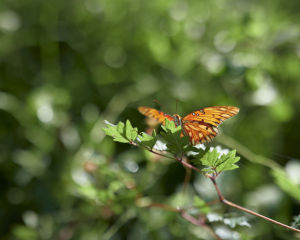
The Ecological Impact and Potential of the American Lawn
By Jake Eshelman
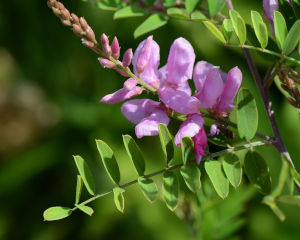
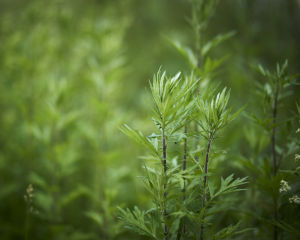
Viriditas: Musings on Magical Plants: Artemisia vulgaris
By Margaux Crump

Working the Garden and Spirit: An Interview with Maria Rodale
By Gayil Nalls
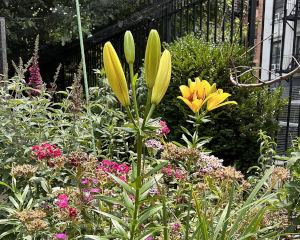
Green Oases:
NYC’s Community Gardens
By Olivia Mermagen
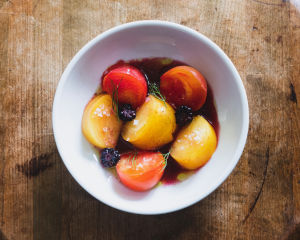
Eat More Plants Recipes:
Heirloom Tomato with Fermented Blackberries and Roasted Kale Stem Oil
By Tessa Liebman
A limited number of signed copies of Love, Nature, Magic by Maria Rodale are available in our store.
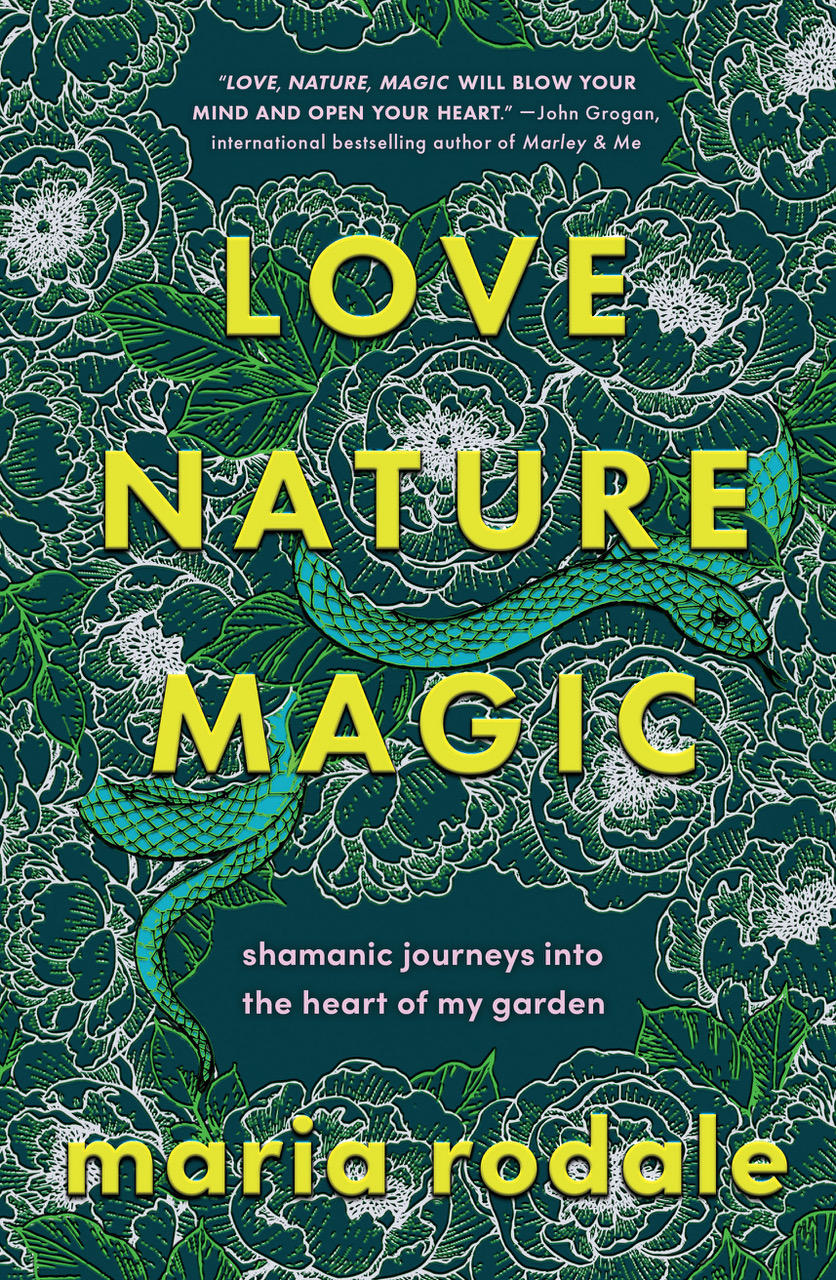
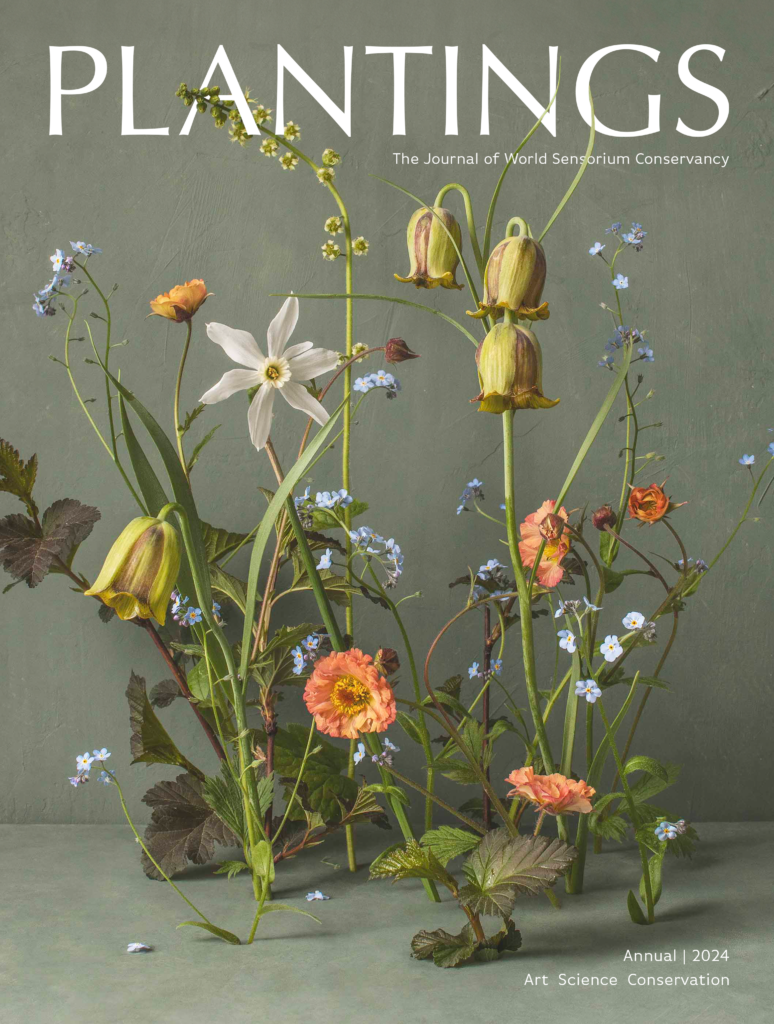
Plantings Print Annual 2024
Do you have the 2024 Plantings print annual?
Plantings cultivates innovative ideas and fresh perspectives, nurturing the global conservation community. Our readers find inspiration in forward-thinking individuals and approaches dedicated to fostering a better life for the planet and all its inhabitants.
The 2024 edition of Plantings is available in our store for shipping.


